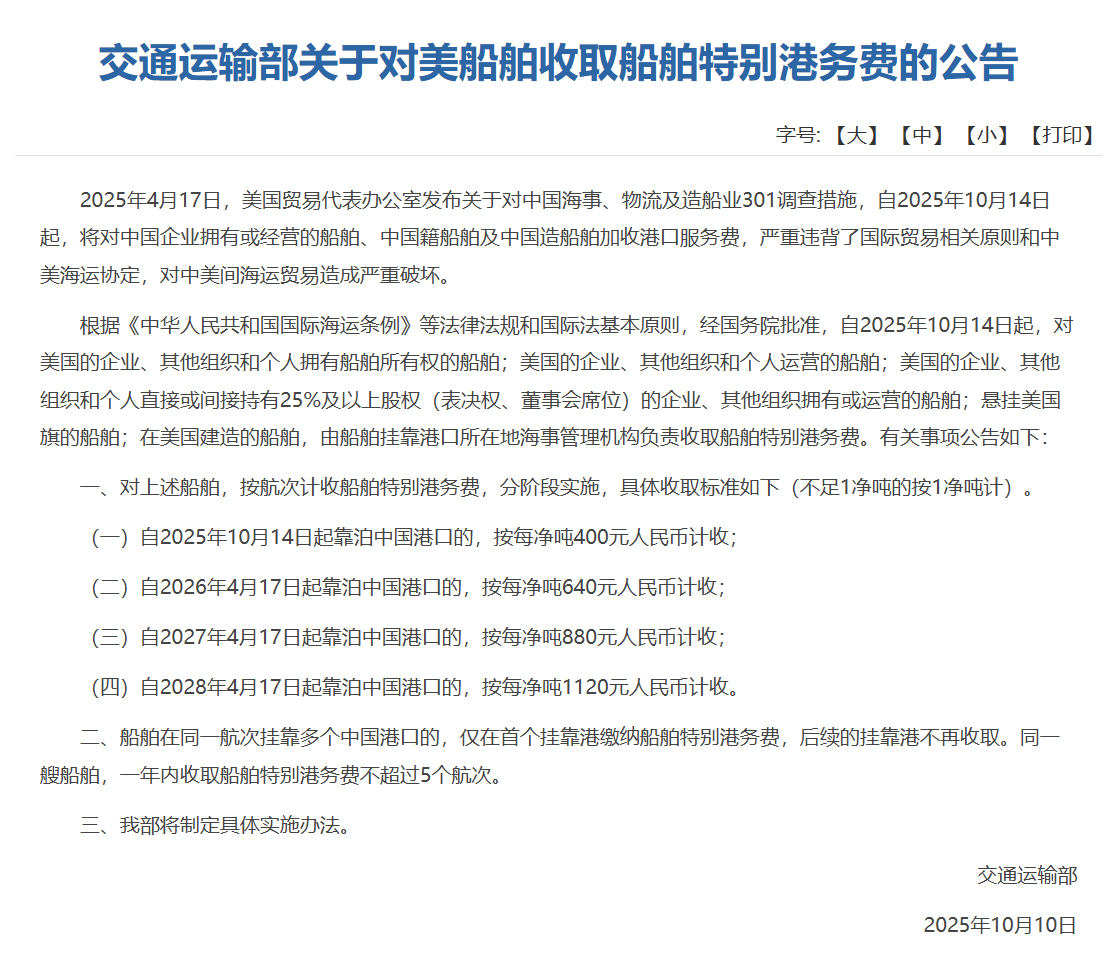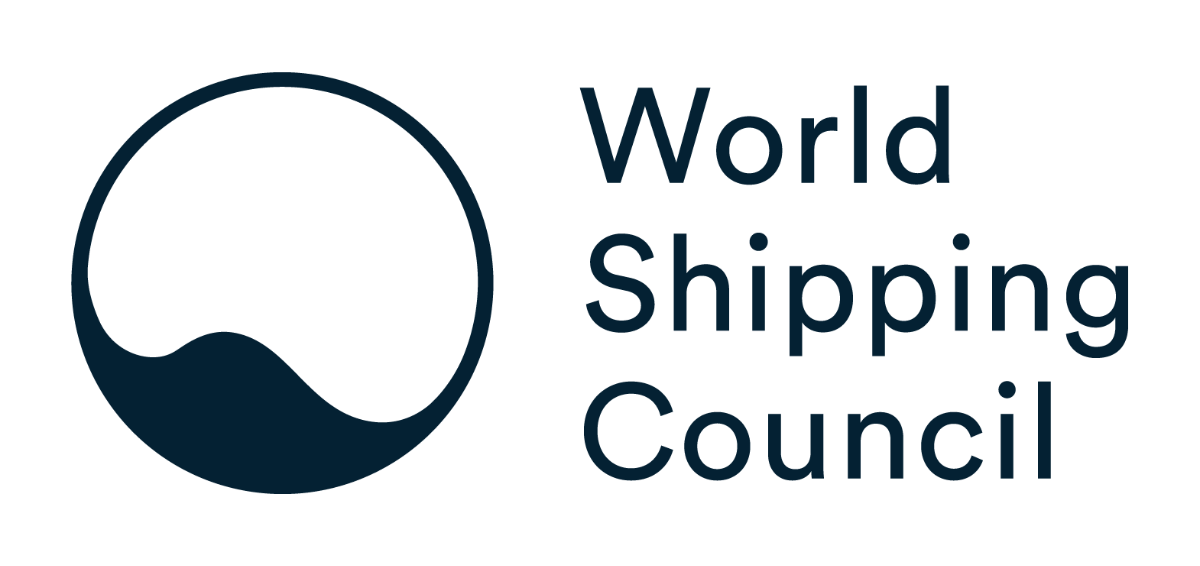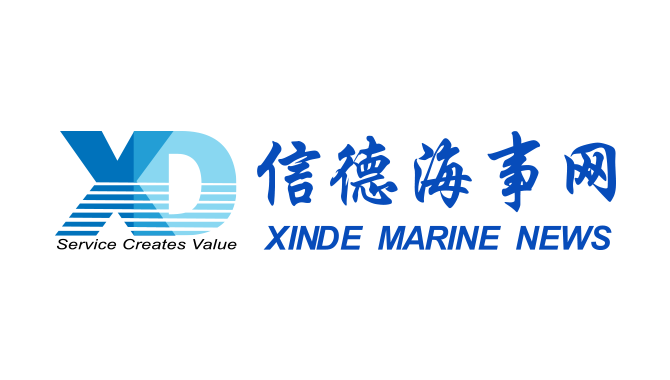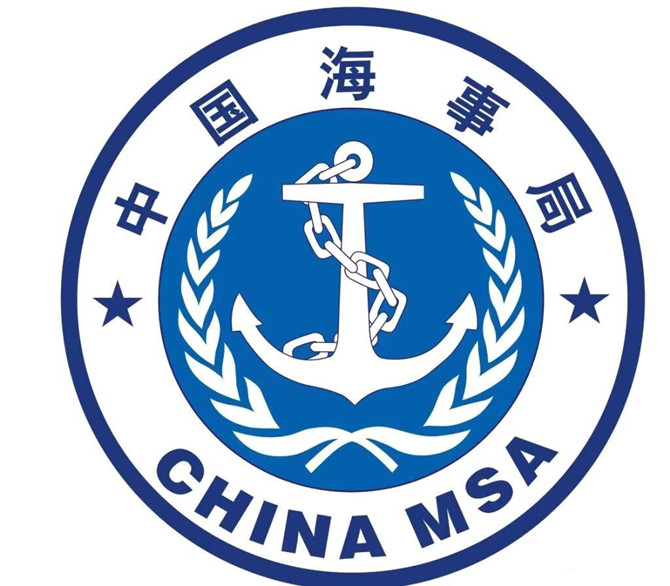
Subject: The Maritime Safety Administration of the People's Republic of China issued "Operational Guidance for Ships and Seafarers for the Prevention and Control of COVID-19 Epidemic (V1.0)"
The Guidance was issued by the MSA of the People's Republic of China on March 2, 2020, with reference to the WHO and IMO Guidance on the prevention and control of Novel Coronavirus (COVID-19) epidemic on ships, and based on the practical experience of shipping companies on the prevention and control of the epidemic. The Guidance aims to provide advice for the prevention and control of COVID-19 epidemic on ships and guidance for the personal protection of crew.
The Guidance puts forward the operational Guidance for prevention and control of COVID-19 on board systematically, meanwhile for passenger ships, it raises specific suggestions on the epidemic prevention and control measures according to different area and different level.
The operational Guidance for prevention and control of COVID-19 mainly includes 7 aspects as follow:
1. To establish and improve the epidemic prevention and control management system.
2. Ships implementing management measures for epidemic prevention and control.
3. To strengthen personal protection of crew.
4. Emergency operation in the event of suspected cases.
5. Reporting on suspected case.
6. Mental intervention on crew.
7. Access to epidemic information.
Suggestions on the epidemic prevention and control measures of passenger ship were divided into 3 parts according to high-risk area, medium-risk area and low-risk area.
For more details, please kindly find below free-translation of the Guidance for your reference.
Free-translation
Operational Guidance for Ships and Seafarers for prevention and Control of COVID-19 Epidemic(V1.0)
With reference to the WHO and IMO Guidance on the prevention and control of Novel Coronavirus(COVID-19) epidemic on ships, and based on the practical experience of shipping companies. This Guidance aims to provide advice for the prevention and control of Novel Coronavirus(COVID-19) epidemic on ships and guidance for the personal protection of crew.
The Maritime Administration of the People's Republic of China will update the Guidance as necessary.
1. To establish and improve the epidemic prevention and control management system
Shipping companies may incorporate the epidemic prevention and control system into the company's safety management system according to the type of vessels managed, the trading area and the requirements of epidemic control at different area and at different levels.
(1) Formulate a management plan for the epidemic prevention and control
The shipping company shall establish a management plan for prevention and control of the Novel Coronavirus(COVID-19) epidemic on board, including the on-board quarantine plan, guide the ships to set up a working group for prevention and control of the epidemic, with the captain as the group leader and the head of the ship's department as the group member, improve the work-system for prevention and control of the epidemic, and supervise all the personnel on the ship to implement the various measures for prevention and control.
(2) Implement the responsibility of epidemic prevention and control
The shipping company shall ensure the communication between the shore company and ship, designate the master or other appropriate personnel as the primary responsible person for the prevention and control work of the epidemic on board, guide the ship to carry out the prevention and control work of epidemic, implement various measures for prevention and control, and comprehensively strengthen the prevention and control work of the epidemic.
(3) Establish a screening system for the epidemic prevention and control
Ships shall establish "epidemic prevention log". The shipping company shall guide screening for all the crew members on board, obtain a list of the seafarers who have passed through the countries or key areas with the Novel Coronavirus(COVID-19) before boarding the ship, to record and report the screening work and routine prevention and control work of the epidemic.
(4) Establish a training system for the epidemic prevention and control
The shipping company shall provide knowledge training related to epidemic prevention and control on boardtimely, make training plan, guide the crew to recognize the signs and symptoms of COVID-19 disease, report the relevant situation of epidemic prevention and control timely, ensure that the seafarer newly embarked to complete the knowledge training on epidemic prevention and control before the ship’s sailing, and regularly organize all crew of ship to conduct training on familiarizing the use of personal protective equipment(PPE) and emergency drill procedures and so on. Training will be provided to the relevant crew in the aspects of suspected patients’ on-board quarantine and care, management of close contacts, transfer of suspected patients, passenger guidance and control and so on. Shipping companies’ training can be carried out by means of text, network or video, etc., and self-organized training on board can be carried out by means of watching videos, reading relevant materials and broadcasting on board.
(5) Establish a drill system for epidemic prevention and control
The shipping company shall instruct the master to organize crew members to conduct emergency drills of simulating the occurrence of epidemic on a regular basis, including the connection with the shore-based company, the suspected patients’ on-board quarantine and care, the management of close contacts, the transfer of suspected patients and the passengers’ guidance and control.
2. Ships implement management measures for epidemic prevention and control
(1) Supplies for the epidemic prevention
a. The shipping company shall provide the necessary epidemic prevention materials timely and establish a supply system of epidemic prevention material list.
b. According to the amount of crew on the ship, adequate protective masks shall be allocated, including allocation to the personnel on duty at the ladder gate, workplace personnel in contacts with visitors and the shipping company’s shore-based personnel attending work on board to use. (according to the actual needs of the ship).
c. Equipped with protective gloves, goggles and protective clothing. (according to the actual needs of the ship).
d. Equipped with medical infrared thermometer.
e. Equipped with hand disinfectant, placed in the ladder gate, living area and public place for use.
f. Equipped with disinfectant, disinfection powder for disinfecting the kitchen and living areas.
g. According to the latest version of the national treatment plan for Novel Coronavirus (COVID-19), equipped ship with corresponding preventive and therapeutic medicine.
(2) Supervise the suspected symptoms of COVID-19
a. The master shall designate particular personnel to take charge for temperature measurement of the crew and passengers on board.
b. Measure temperature in the morning and at night, observe and inquire whether there are any relevant symptoms. The results of measurement and suspected symptoms should be registered in time, and signed by the captain and filed for review.
c. Implement Zero reporting system for temperature measurement tracking of crew and passengers, report to shipping company’s shore-based management department at a regular time every day, under normal circumstance, in case of the seafarers’ fever, suspicious symptoms or other abnormal conditions, report to the shipping company immediately.
(3) Marine gangway management and control
a. During berthing operation of the ship, the master shall supervise and urge the personnel on duty at gangway to strengthen the control of the gangway and strictly check the certificates and PPE wearing condition of all embarkation personnel, forbid irrelevant personnel embarking.
b. The sentry for temperature measurement and registration of embarkation personnel shall be set up at gangway to measure embarkation personnel’s temperature firstly. If the embarked personnel’s temperature exceeds 37.3 degrees or the embarkation personnel do not wear PPE as required, they are not allowed to embark.
c. The personnel on duty at gangway shall strictly wear masks and protective gloves, and when necessary, wear protective clothing and safety goggles.
d. In countries and ports reporting the presence of COVID-19 diseases, preventive and control measures shall be taken in accordance with the local requirements for the epidemic prevention and control. Crews are suggested not to land in high-risk areas without special circumstances.
e. The masks worn by the disembarked personnel are strictly prohibited to be taken into the living area and should be uniformly put into the sealed recover container set at the gangway.
(4) Communication between Personnel Ashore and On board
a. Vessels shall formulate temporary measurements for the control of the epidemic, minimize the communication activities between the personnel ashore and on board during the epidemic, and refuse embarking for access and family visits.
b. The ship shall strictly control the movement area of the embarking visitors, establish tally room or reception room on the main deck, and limit entering into the crew's living area for the agents, tally personnel, suppliers and other visitors.
c. In high-risk areas, it is recommended that the replacement of seafarers be suspended, while in other areas, the arrangement of replacement shall be on the premise of complying with the port authorities’ provisions for the epidemic prevention and control, and implement of the reporting system in accordance with the provisions.
(5) Dietary safety of ship
a. The ship's food should be purchased from regular suppliers, avoid purchasing from the ports and regions with the epidemic as far as possible, and record the ship's food procurement.
b. During the prevention and control of the epidemic, the recipes should be formulated scientifically, supplement with fresh vegetables and fruits, and ensure the intake of an appropriate amount of meat, poultry, fish and other protein food.
c. Cutting boards and knives for raw and cooked foods should be separated and the consumption of raw food should be avoided, especially meat, eggs and seafood.
d. Strictly implement the individual serving system, all tableware should be disinfected before meals.
(6) Ship accommodation ventilation
a. It is recommended to ventilate the ship accommodation and living area three times a day for 20-30 minutes each time. In case of ventilation in cold area, attention should be paid to keep warm.
b. Vessels arriving at port in epidemic areas shall pay attention to the marine air conditioning and ventilation control system and try best to keep the air fresh in the living area and accommodation on board. It is suggested to control the primary wind (fresh air) with proportion of 10%-20%, and the secondary air (recirculating air) with proportion of 80%-90%, and adjust the air ratio according to the actual condition until the secondary air is closed.
c. When the fan coil unit of the central air-conditioning system is in normal use, sterilize the air supply outlet and the air return outlet regularly.
d. When the fresh air system of the central air conditioning is in normal use, once the epidemic occurred, do not stop the operation of the fan. After the evacuation of the personnel, close the exhaust branch pipe, and after running for a period of time, shut off the fresh & exhaust air system and then conduct disinfection.
e. For the air system with return air system, the return air system should be completely closed to ensure the operation of the fresh air system.
f. An quarantine space or area should be set up on the ship to prevent the spread and infection of the virus. If conditions permit, the quarantine space should be equipped with an independent toilet and with independent ventilation or close the return air of whole ship to reduce the air circulation inside the living area.
(7) Cleaning and Disinfection
a. Scientifically use of disinfection items, comply with the requirement of concentration ratio of disinfectants containing or alcohol, implement the anti-fire and anti-static measures, strictly prevent the occurrence of deflagration, fire, personnel being poisoned and other accidents, disinfection methods should be in accordance with the relevant national requirements and Guidance.
b. Strengthen the management of disinfection supplies, and implementing systems for the custody of special personnel, storage in special rooms, and professional operation to reduce potential safety hazards and prevent safety accidents from occurring.
c. Medical facilities, accommodation and activity area used by patients diagnosed with COVID-19, suspected and close contacts should be cleaned and disinfected daily in accordance with prescribed procedures.
(8) Prevention and control measure of passenger ships at different area and at different level
Passenger ships shall follow the suggestions on prevention and control at different area and at different level in the annex of this guide, implement various prevention and control measures, screening the embarking personnel,strengthen the training and relevant drills of the crew on the knowledge of epidemic prevention and control, arrange passenger accommodation reasonably, ensure disinfection and ventilation of ship spaces, complete personal protection for crew and passengers, control the communication between ashore and on board, strengthen the publicity of the relevant health knowledge for passengers, guarantee health and safety of crew and passengers earnestly, prevent the spread of the epidemic.
3. Strengthen personal protection of crews
(1) Pay attention to personal hygiene
a. Seafarers shall frequently wash hands, take bath and change clothes.
b. Seafarers should wash their hands regularly before and after preparing food, before eating, after using the toilet, after coughing or sneezing, after contact with other people or animals, and after going outside and back to the ship, etc., and if running water is not available, hand sanitizers can be used to clean hands.
c. The crew should place the outdoor clothes or clothes they wear in the workplace in the locker room. It is strictly prohibited to bring outdoor clothes back to their personal room. Crew members should wash their overalls with disinfection frequently
d. When coughing and sneezing, cover mouth and nose with tissue to prevent droplet splashing, used tissue are recommended for centralized incineration disposal.
(2) Recommended methods of hand washing
Use soap or hand sanitizer to wash hands with running water. The following six-step is recommended as follow:
a .Rub hands palm to palm(Rub hands five times).
b .Right palm over left dorsum with interlaced fingers and vice versa.(Palms on the back of the hand, hands folded, left and right hand exchange to rub five times).
c .Rub interlaced fingers palm to palm.(Palm relative to the ten fingers interlace, rub 5 times,vice versa).
d .Rub the palm with the fingertips, vice versa.(fingertips in your palms, rub five times).
e .Rotational rubbing of left thumb clasped in right palm and vice versa.
f .Rotational rubbing, backwards and forwards with bended fingers of right hand in left palm and vice versa.

(3) Enhance precautionary awareness
a. During the epidemic, try to minimize daily interactions between personnel on board, avoid unnecessary contact with visitors, and maintain a safe distance when communicating.
b. All visitors including pilots, should wear masks all the way after embarking.
c. After visitors disembarking the ship, the place where the visitors stayed shall be ventilated and disinfected.
d. Crew members should wear masks and protective gloves when they contact with external documents, receipts and other objects in daily work, and disinfect if necessary.
(4) Strengthen self-protection
a. Wear personal protective equipment regularly.
b. During berthing, the crew should wear masks and protective gloves all the way when they leave the living quarters to the deck work place , avoid close contact with anyone who has cold or flu-like symptoms, and try to avoid disembarking into public places or contact with livestock or wild animals.
c. Ensure enough sleep. Sleep-deprived is harmful to the brain's nervous system functions, which will not only cause memories difficulties, emotional instability, low work efficiency, but also reduce the body's immunity.
d. Strengthen physical exercise. Develop the habit of self-conscious exercise on board, actively do exercise, maintain the proper weight, and build up physical resistance.
(5) Selection of medical masks
Effective types of mask to prevent COVID-19 includes: Disposable surgical mask, surgical masks(including ear-loops type and tie-on type, normal standard yy0469-2010 or yy0469-2011, which printed on the individual packaging of the mask), surgical protective mask( such as medical GB19083-2020, KN95, medical N95-3M1860/1870+, FFP2-UVEX ) and so on.
a. Disposable surgical masks are recommended for using in non-crowded public places.
b. Surgical masks are recommended for suspected patients and crew who frequent contact with them while on duty.
c. Particulate matter respirators conforming to KN95/N95 and above is with better protective effect than surgical mask and disposable surgical mask. It is mainly used by medical personnel. Seafarer could also wear in high-crowded places or airtight public places.
d. Surgical protective masks are recommended for diagnosed patients to use when transferring.
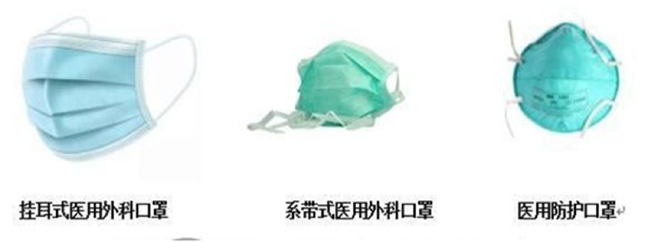
(6) Wear masks properly
Choose the appropriate types of masks according to different requirements of operation. Before wearing the mask, perform hand hygiene before putting on a mask, wash your hands or disinfect your hands with hand disinfectant. Check the effectiveness and integrity of the mask, and only use the mask if there is no abnormal.
a. Masks should be worn when entering crowded or airtight public places.
b. If any crew member is suspected of being infected, they should wear the surgical protective mask or surgical mask. Disposable facemasks should be replaced within 4 hours after activated, and they should be replaced in time in case of damage, dampness or contamination by patients' blood and body fluids.
c. Crew with respiratory diseases must use protective facemasks under the doctor’s instruction.
d. Take surgical masks as an example, wearing steps is as follow:
(i)Flatten masks, colored side of the mask face outwards with the metallic strip nose clip uppermost.
(ii)Extend the mask to fully cover mouth, nose and chin. For ear-loops type, position the bands of two sides around both ears. For tie-on surgical mask, secure upper tie at the crown of head. Then secure lower tie at the nape.
(iii)Using both hands, mold the nosepiece to the shape of your nose by pushing downward and outward while putting our fingertips on nose clip and moving your fingertips from middle position down both sides of the nosepiece.
(iv)Tie-on type can be adjusted the tightness of tie.
e. Steps to take off the mask:
(i)While taking off the mask, avoid touching the front surface of mask(the contaminated surface) when removing.
(ii)Ear-loops type surgical mask: both hands lift up two side bands.
(iii)Tie-on type surgical mask: loosen the lower tie and then the upper one.
(iv)Surgical protective mask:Pull bottom strap over your head and use another hand to pull the top strap over your head for removing masks.
(v)Only hold the tie of the mask for discarding.
(7) Disposal of discarded masks
1. Discarded masks used on board should be disposed depending on different situation.
2. Generally when masks worn by healthy seaman are deformed, wet or dirty, leading to reduce protective performance, masks would be replaced. Used masks can be disposed according to the requirements of non-medical waste classification.
3. Masks worn by suspected patients, diagnosed patients and patients with respiratory diseases or close contacts should not be discarded at random and should be treated as infectious medical waste, uniformly store in yellow infectious clinical waste bin, use 5% chlorine-containing disinfectant according to the ratio of 1:99 to sprinkle on mask, and disinfect the waste bin with 75% alcohol or chlorine-containing disinfectant twice daily.
4. Emergency operations in the event of suspected cases
When there is a suspected case of COVID-19 disease on board, activate emergency operating procedure in accordance with the epidemic prevention and control management plan, implement personnel quarantine and various measures of protection.
(1) During the ship's berthing
a. Take measures of quarantine immediately to suspected case and everyone on board completes protective measures.
b. Report to shipping company and local epidemic department of prevention and control and accept telemedicine guidance.
c. Contact the local agent or the representative of shipping company to arrange the suspected patient to disembark for medical treatment. Meanwhile, inform the shipping company to provide the relevant shore-based support, and personnel on board try not to participate in the movement and transportation of the suspected case.
d. If the laboratory result is positive after suspected case transferring to the shore, then all close contacts should be screened and quarantined.
e. Whole ship should be sterilized and mainly focus on disinfection in living accommodation cabins and activity space of suspected case.
f. Close contacts should be isolated for observation.
(2) During ship’s voyage
a. Take measures of quarantine immediately to suspected case and anyone completes protective measures.
b. Report to shipping company, request telemedicine assistance from the nearest offshore department of epidemic prevention and control if necessary, and accept telemedicine guidance.
c. The shore-based and ship jointly assess the suspected patient's condition and if the disease is under control, arrange the patient to a local hospital for examination and treatment at the destination. If the disease is out of control, the shipping company shall immediately activate an emergency response, the shore-based and vessel shall negotiate an emergency plan of berthing or delivery, send the suspected patient to the shore for examination and treatment at fastest.
d. Activate emergency shift operation and isolate close contacts for observation.
e. Whole ship should be sterilized and mainly focus on disinfection in living accommodation cabin and activity space of suspected case.
(3) Emergency operation of cargo ship
a. Turn off the ship's air conditioning system.
b. Turn off the ventilation devices between crew rooms and public places, and block the internal air circulation between crew rooms.
c. The suspected patients will be placed in the infirmary or a separate cabin for quarantine with natural ventilation.
d. Suspected patients should be placed in same area as far as possible, isolated in an independent room, and implement sealed management.
(4) Passenger ship emergency operation
a. Isolate the suspected patient in the room with porthole, close the air distribution device, block the internal air circulation with other rooms, and adopt natural ventilation.
b. Take off the air distributor and air return devices in public places, and also close the air distributor of rooms with portholes for using natural ventilation.
c. The air conditioning system only supplies air to rooms without portholes and should be adjusted to fresh air mode.
d. Turn off the return air to prevent the virus carrier from posing a threat to others.
e. If condition permitted, air conditioning room can install ultraviolet ray sterilizer(UV sterilizer), according to the duration requirement of UV sterilizer disinfection, after completing disinfection, start air conditioning shortly and execute intermittently air supply, to ensure to have enough oxygen level in the room without portholes.
(5) Information communication of suspected cases
The ship shall use the ship's broadcasting system and walkie-talkie to communicate with the suspected patients to reduce the direct contacts. Stipulate staggered contact times of objects such as food to reduce the possibility of cross-infection.
(6) Quarantine and nursing of suspected patients
a. Suspected patients should wear a surgical mask and be self-isolated in independent cabin. Not be allowed to participate in group activities on board and have diner alone in their own cabins to avoid direct contact with other crew members.
b. The isolation room should be strengthened with air circulation, or the exhaust fan should be continuously used to maintain air circulation and pay attention to keep the environment clean.
c. Gloves, paper towels, facemasks and other wastes suspected of being used by patients should be placed in a dedicated garbage bag under seal. They must be marked as pollutants.
d. Limit the number of caregivers and try to arrange a person with good health statue and no chronic diseases to take care of the patient. Refuse all visits. During nursing, the persons should wear masks, protective gloves and goggles, and when necessary, wear protective clothing. Protective equipment should be disinfected or disposed after use.
(7) Managing close contacts
All persons on board should be assessed for the contact situation with the suspected patients, list the crew/passenger activity location to classify either as a close contact with a high risk of exposure or as having a low risk of exposure. Contact tracing should begin immediately after a suspected case has been identified on board. All passengers, medical staff and crew who are probably to contact with the suspected patient should be quarantined under the instruction of the ship's medical personnel or medical professionals. Isolation period is 14 days from their last exposure.
(8) Transferring suspected patients
During the disembarkation of suspected cases, every effort should be made to minimize the exposure of other persons and limit the movement area of suspected patient on board strictly.
In principle, the transfer of suspected patients should be carried out by professional medical personnel on shore. In case that,, due to the conditions limitation, it is necessary for the crew to participate in the transfer of the suspected patient, the relevant crews should perform hand hygiene according to the regulations, and wear the medical mask, goggles, protective clothing and protective gloves.
(9) Medical waste disposal
All waste produced in the cabin or isolation room should be disposed according to the protocol of the ship for clinical infectious waste. If an incinerator is available on board, waste should be incinerated. If waste must be delivered ashore, special precautions are needed and the port authority should be informed before waste delivery.
5. Report suspected case
(1) Timing of Ship Report
In case any crew member or passenger is with symptoms of fever, cough or dyspnea and a history of travel to the affected area within the past 14 days, or even death, immediately report to the health care department or the inspection and quarantine department nearest the port or offshore, and inform the maritime administrative department.
(2) Matters of ship report
a. Ship’s name, ship’s type, flag state, port of registry, IMO code or call sign, the crew number and passenger number on board.
b. Ship's port of call within 14 days, including the list of ports where the suspected patient disembarked.
c. Date, timing and ship location when the epidemic occurs.
d. Name, sex, position, date of birth, nationality and embarkation date of the suspected patients.
e. Body temperature record, list of symptoms and signs (including the onset time of each symptom) of relevant suspected case, number of deaths (if any), possible causes, measures taken and development trend, etc.
For ships trading internationally, if there is a suspected case on board, the MDH should be completed and sent to the local authority in accordance with the International Health Regulations (IHR 2005) and national legal requirements of the port located to arrange the disembarkation of suspected case.
6. Mental intervention on crew
The master shall organize the mental counseling and health adjustment of the crew members. During the period of the epidemic, due to the onshore epidemic situation, it may lead to crew shifts impossible, hence the crew may extend their working time on board, and be unable to go ashore for rest and leave normally. Also due to the information imparity on board, it would result in the crew’s mental anxiety, panic, anger and irritability, depression, fear, blind optimism, loneliness, impulsion and irritation or other negative emotions, which need to be targeted and timely troubleshooting. The following methods are recommended for the adjustment of crew's mental health:
(1) Slow breathing
Breathe in slowly through your nose. As you do it, count to five. Hold your breath deeply for another five seconds and let the air reach the deepest depths of your lung. Then breathe out through your nose or mouth to the count of five. Have two rounds of normal breathing after exhaling the air completely. Repeat the process and practice for three to five minutes every time.
(2) Muscle relaxation
Lie on your back or sit up straight and relax your muscles from your feet to face or vice versa.
(3) Tapping shoulders with crossed arms
Keep your eyes closed or half-closed and cross your forearms over your chest. Tap your shoulders alternately with slow and deep breaths. Repeat the process.
(4) Containers for emotions
This technique helps you manage your negative emotions through imagery. You can imagine packing up all your negative emotions and keeping them in a sealed container, thus freeing yourself from the negative feelings and pessimistic mood in a short time.
7. Access to epidemic information
Information of the latest COVID-19 epidemic can be found on the official website of the Chinese center for disease control and prevention at http://www.chinacdc.cn,health consultation telephone Number is 12320.
Attachment:Suggestions on the epidemic prevention and control according to different area and diffident level for passenger ships.
Suggestions on the epidemic prevention and control according to different area and diffident level for passenger ships.
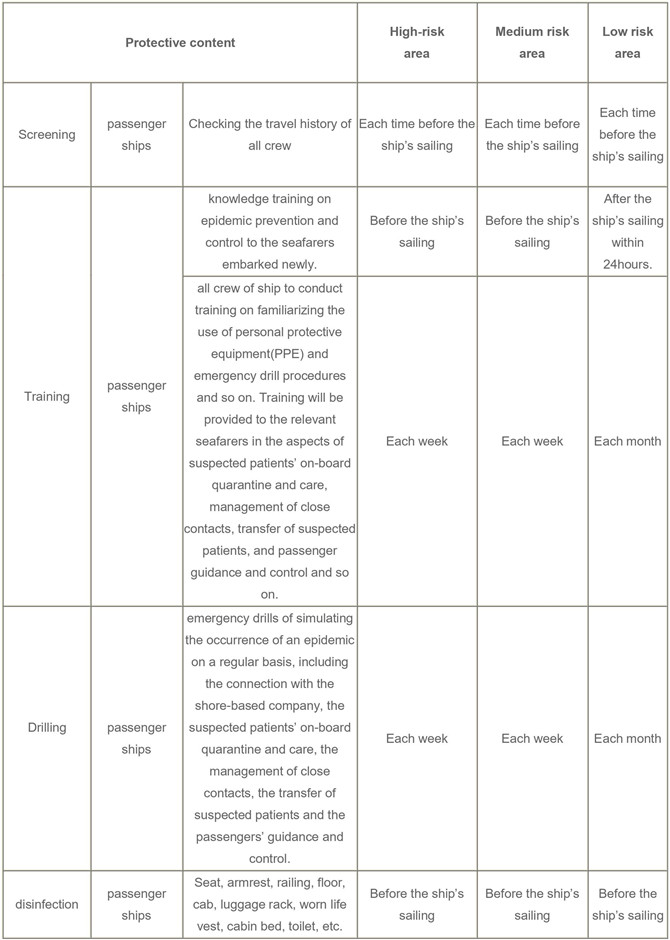
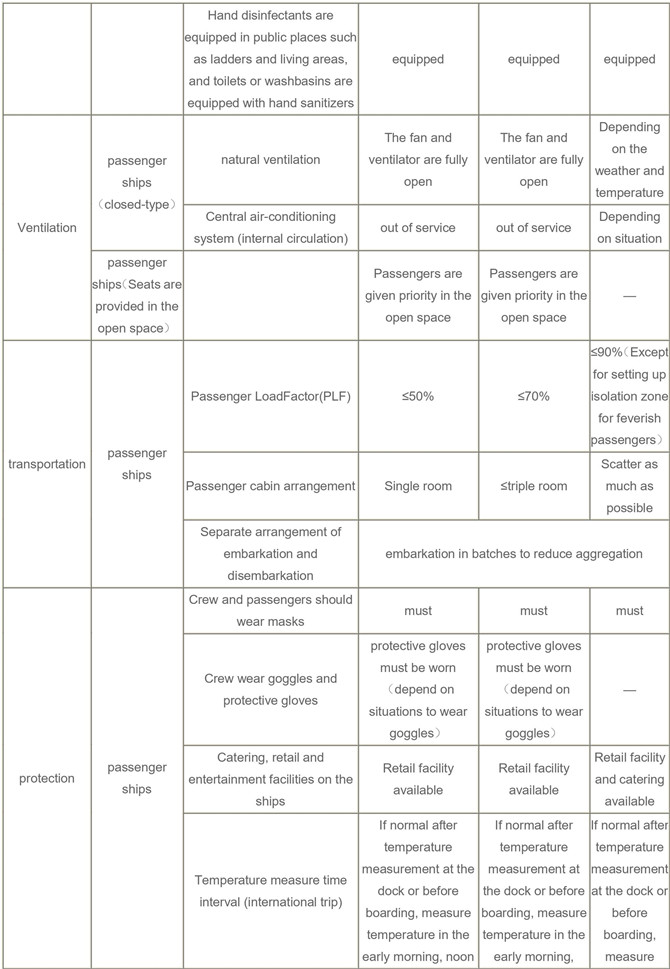


Source:HUATAI
The opinions expressed herein are the author's and not necessarily those of The Xinde Marine News.
Please Contact Us at:




